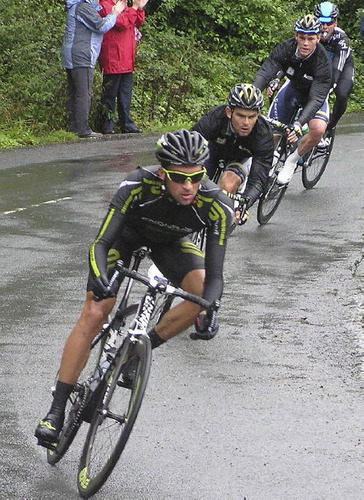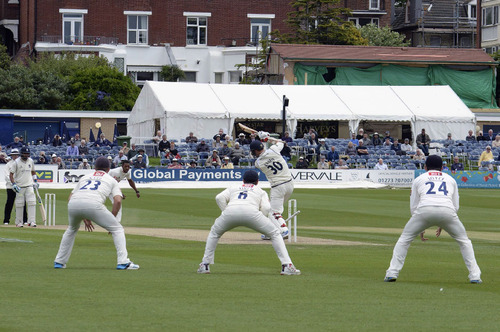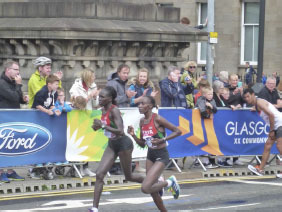True optimization is the revolutionary contribution of modern research to decision processes. George Dantzig
Given the recent round of large sporting events I thought in this article I would explore the role O.R. plays in sport. I hadn’t appreciated until I started looking just how vast the role is! So, while this article shares something of the use of O.R. in sport, offering an insight into the nature of questions that O.R. can help address – many of these are conceptually transferable beyond sport.
The goal of my columns is to share the discipline with users/potential users of O.R. by highlighting how the ‘business’ challenges they may be facing can be supported. In addition, they may also stimulate thinking in the O.R. community about possible areas O.R. could help in the area being considered.
O.R. AND SPORT
O.R. is used in a wide range of sports: cricket, rugby, football, tennis, darts, racing, and many more. There are variances in the nature of its use across different types of sport. An article by Wright (https://bit.ly/MBWright2008) discussing ‘50 years of O.R. in sport‘, identified the areas of support that O.R. tends to provide as tactics and strategy, scheduling, forecasting and other areas.
In line with Wright’s thoughts about future areas, sport is also making use of the large volumes of data collected and there is still more that could be done related to the use of behavioural O.R. Broadly speaking, the areas of coverage are operational, planning and also sport in a more strategic sense beyond an individual activity or team. In line with this, there are some examples of foresight and futures being used in the context of sport.
Given that I have come to learn that the use of O.R. in sports is an enormous area, this article will share some examples of O.R. supporting sport across the following areas: tactics and strategy, scheduling, scenario planning and systems modelling. It is by no means an exhaustive representation of the help the disciplne of O.R. provides to different sports across different areas.
TACTICS AND STRATEGY
A significant area of sport where O.R. helps is related to tactics and strategy. Examples include:
Improving team and individual performance. An Impact article by Lade (https://bit.ly/Lade2019) shared how the use of an O.R. tool called INSIGHT by a variety of organisations, including England Rugby, Bath Rugby, the Football Association (FA), British Athletics, British Sailing, GB Snowsport, the Lawn Tennis Association (LTA) and Team Sky is helping improve individual and team performance. This has data analysis with the use of AI at its heart. A really interesting application area discussed is work on predicting player ranking over the duration of their career.
Cricket team selection. A paper by Sharp et al. (https://bit.ly/Sharpeetal2011) explored how to select the optimal team for a 20/20 cricket match. The work focussed on whole team selection using an integer programming approach that can be extended to a multistage team selection game. This involved considering the mix of different skills, the requirement of the match and team circumstances. This approach has been used in fantasy league games, updating the team as more information becomes available.
The work built on that of others looking at cricket performance evaluations. An interesting modelling approach is that of Data Envelopment Analysis (DEA), which is used to look at the performance and benchmarking of different ‘decision-making units’ (DMUs).
Finding inefficiencies. Bhat et al (https://bit.ly/Bhatetal2019) provide an overview of the use of Data Envelopment Analysis (DEA) in Baseball, Basketball, Cricket, Cycling, Football, Golf, Handball, Olympics, and Tennis. In the work presented, comparisons across the sports were between players, teams and nations at, for instance, the Olympics. In providing a measure of relative efficiency, DEA was able to identify strengths and weaknesses in the areas being considered. Most papers related to football club comparison concern English football and the authors believe this is because they were the first to be floated on the stock market.
F1 pit stop tyre strategy. Maharwal et al. (https://bit.ly/Maharwaletal2019) looked at the roles of O.R. in sports and gaming. One example provided is the use of game theory to support decisions around tyre change in Formula 1 racing. It considers a range of factors such as the optimum time to come in and change tyres and its relationship with when the driver rejoins the track – looking to re-enter at a time when being blocked by slower drivers is minimised.
E-sports gaming centre optimal seating strategy. Kwag et al (https://bit.ly/Kwagetal2022) looked at how an e-sports gaming centre can best allocate its seats. The work undertook data analysis to look at the impact on revenue of different seat allocation strategies for large and smaller groups. There are differences in the nature of gaming centres compared with other areas, such as airlines, hotels and cinemas, which consider a similar question. The work showed that prioritising the seat allocation of larger groups does not always generate the largest revenue.
There are many more examples of O.R. supporting tactics and strategy at the operational and strategic levels.
SCHEDULING
A significant area where O.R. is used is in the scheduling of matches for large tournaments. An Impact article by Wright, (https://bit.ly/MBWright2018), provides a good lay person introduction to how O.R. is used to help with scheduling for sports and the type of questions that are required.
Football and cricket tournament scheduling. O.R. is routinely used in cricket and football scheduling and the Marharwal et al. paper highlights different examples and methods used for this. In an Impact article, Durán et al. (https://bit.ly/Duran2017) discussed the optimisation work used to schedule football leagues in Chile being extended and used in the scheduling of football World Cup matches.
Scheduling a sports conference. Nemhauser and Trick (https://bit.ly/NemhauserandTrick1998) discussed the problem of scheduling a major college basketball conference and the analytical approach used in the real situation was in the end able to turn around schedules in a day. The exploratory work generated a possible 10 billion schedules!
CONSIDERING THE FUTURE
Scenario planning and sports tourism. Darabi et al. (https://bit.ly/Darabi2020), described the use of scenario planning to explore the suitability of sports tourism to a particular area, Mashhad, Iran. The work identified that the area has great potential for attracting tourism in the future and identified a number of factors to be influenced to enable this, including: natural drivers, social-cultural drivers, managerial and programmatic drivers, economic drivers, advertising drivers, service drivers, and infrastructure drivers.
SYSTEMS MODELLING
There is some recent work looking at systems modelling in sports: an area perhaps where more could be done.
Systems approach to sports injury. Hulme at al. (https://bit.ly/Hulmeetal2019) explored the use of a complex systems approach to sports injuries. The work used agent-based modelling to model the occurrence of sports injuries, focussing on distance running related injuries. They considered changing running distances and the use of different runners ‘tools’. They showed it is possible for athletes to reach and surpass individual physical workload limits, for instance, building weekly running distances over time after injury. The authors concluded that simulation-based techniques have a role to play in the complex area of sports injury research.
Modelling the sports entrepreneurship ecosystem. Darooghe et al. (https://bit.ly/Daroogheetal2022) investigated sports entrepreneurship within Iran and, given the complexity of the eco system, used system dynamics to do this. Their work was especially interested in understanding how to achieve sustainable development of entrepreneurship, highlighting the key role sports tourism plays in this. The modelling undertaken identified that as well as infrastructure, sports entrepreneurship also requires other elements, such as, cultural and social preparations, cooperation of educational systems, administrative and financial support.
Screening attendees at a large sporting events. Holt, in an impact article (https://bit.ly/CHolt2016), discussed the role of simulation modelling and broader O.R. in helping to secure international sporting events. Specifically addressed were effective screening of spectators, athletes and workforce at the world’s three largest multi-sport events. The article discussed the broader strategies adopted in order to minimise queueing and disruption to people – essential to this was security screening not being treated as an isolated activity.
WANT TO LEARN MORE?
This article provided an insight into some uses of O.R. in sport and for those interested in learning more there are several papers in the Journal of the Operational Reseach Society. There are also several books, including those edited by Wright (Citation2015) and by Harrison and Bukstein (Citation2016). For those interested in engaging more with community there is an INFORMS (The Institute for Operations Research and the Management Sciences) area (https://connect.informs.org/sports/home) aimed at bringing folks together. The main O.R. Society annual conference sometimes has an O.R. in sports stream. So lots of opporunity to learn more about this application area of O.R.
The OR Society runs training courses on much of the above if you want to bolster your in-house team. We are an active community and there are various events running through the year that may be of interest.
Additional information
Notes on contributors

Nicola Morrill
Nicola Morrill is a Fellow of the O.R. Society and currently volunteers as its board level Diversity Champion. She writes in a private capacity – all views expressed are her own and all examples are available in the open domain. You can contact her on [email protected]
FOR FURTHER READING
- Harrison, C.K. and S. Bukstein, eds. (2016). Sport Business Analytics. New York: Auerbach Publications.
- Wright, M., ed. (2015). Operational Research Applied to Sports. London: Palgrave Macmillan.



